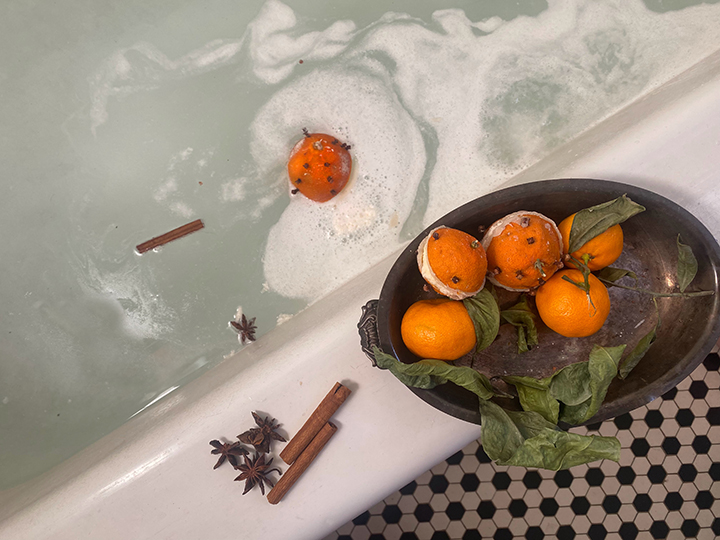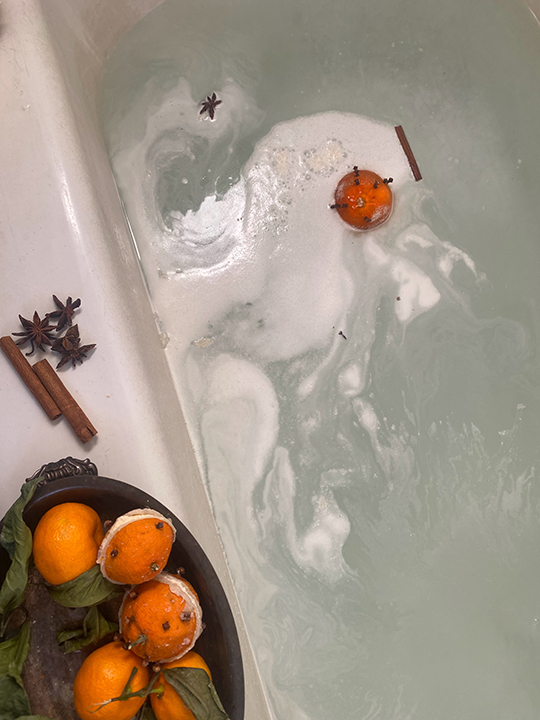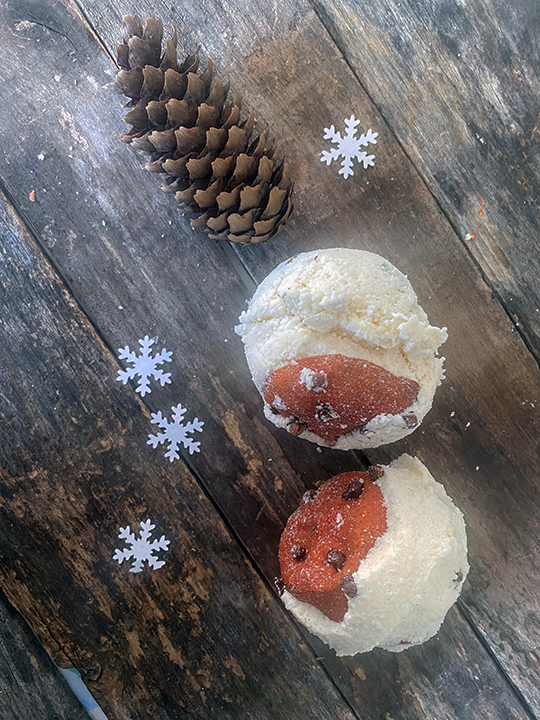
One of the things that love the most about the Wheel of the Year is that it celebrates nature and the changing of the seasons. It is often thought of as a strictly Celtic/ Gaelic construct, but in reality people all over the world celebrate these midpoints in nature is surprisingly similar ways. (Those that are in reasonably similar climates that is.) Ancient people in temperate climates were observing generally the same seasonal changes, the same fluctuation in light and it was understandably important to them. The longest night of the year, and the return of lighter days was noteworthy not just in Europe, but also in Iran, China, and Japan.
In Japan, the Winter Solstice is called Tōji. With roots in the Chinese philosophy of ying & yang, the year is dived into a dark and light half. The dark, cold half of the year is associated with “yin.” Once the solstice passes and the days get longer, the “yang” portion of the year begins and spring will eventually return. This is a reason to celebrate! There are several traditional ways to celebrate Tōji like visiting a hot spring or onsen, (I really need to figure out a way to practice this one…) eating special foods like kabocha squash, and taking a hot bath with yuzu.
A favorite Tōji custom is taking a “yuzu-yu”, or a hot bath with yuzu fruit. Yuzu is citrus fruit that looks a bit like a yellow orange and smells delicious. Like most citrus fruit it ripens in winter. It is thought to have cleansing and healing properties and symbolizes good luck. Taking a hot bath with yuzu on the Winter Solstice is supposed to both prevent colds and ward off bad spirits. I can sometimes find yuzu fruit where I live, but they are fairly rare and expensive, so I generally just eat them! However, I love the idea of a solstice yuzu bath, so I decided to mash it up with one of my own traditions, the orange pomander. Oranges (and really all citrus) are winter fruits and have long been associated with holidays, germ control and an uplifting scent so they seemed like a logical match.
Pomander balls have been associated with Christmas and/or Solstice for some time, but that isn’t how they originated. We think of them as oranges studded with cloves, but in medieval Europe, people would keep little satchels of herbs on them because most everyone and everything smelled bad. They became a status symbol and the wealthier you were the fancier your herbs were. Cloves and orange rind, while common enough today were expensive and exotic spices. The gold standard of showy scents however was ambergris, which led to the french term pomme d’ambre. (Apple of amber- they were often carved into circles) Pomme d’ambre became pomander. At some point this habit of sweet smelling herbs naturally expanded to leaving spices and citrus around the house, particularly when people would be visiting for the holidays. The clove studded oranges that we know and love really came into their own during the Victorian period, although in America at least, they are often erroneously associated with early American colonists because colonial Williamsburg uses them to decorate despite the fact that colonists did not decorate for the holidays at all. Regardless, the smell of clove and orange instantly transport me to a holiday state of mind and I like them in just about any form!
So for my new Winter Solstice tradition, I made pomander bath bombs inspired by the Japanese tradition of yuzu-yu.

Winter Solstice Pomander Bath Bombs
The bath bomb recipe itself is super simple, but the first time I made these they lived up to their name and exploded. There is just enough moisture in an orange half (even one that feels pretty dry) to start the reaction of the baking soda and citric acid. So I have two choices for you here: 1. Use fresh oranges, which I like the look of better, but you will have to coat the insides with beeswax. I think the orangey scent is stronger with this option, but it does add a fiddly step. If you happen to be making candles or using beeswax for something else it’s easy enough to tack on though. 2. Let your orange halves dry out completely. And I do mean completely. The color won’t be as pretty and they get a little misshapen, but I just embedded these into a standard ball mold and they still smelled amazing.
Ingredients:
- oranges or clementines
- cloves
- beeswax (optional)
- 1 cup baking soda
- ½ cup citric acid
- ¼ cup cornstarch
- ¼ cup powered milk (or powdered coconut milk)
- ¼ cup epsom salt
- 2 tsp shea butter
- 1 TBS honey
- 1 TBS apricot seed oil (or whatever you prefer)
- 1 tsp clove essential oil
- ½ tsp cinnamon essential oil
- a few drops of sweet orange essential oil
- small spray bottle with water or witch hazel*
- dome molds (optional)
Method:
First, prepare the orange halves. I tested this with full size oranges, but I generally preferred the size and peel-ability of clementines. Either way, cut them in half an peel out the fruit so that you have two empty halves for each bomb. Stick cloves into the halves in a pattern of your choosing. If you have trouble getting them through the skin poke a little hole with a paring knife first.
Prepare the orange havles one of two ways:
1. Once the fresh oranges have been studded with cloves, melt some beeswax over a double boiler. pour some into each half, carefully swirl it around and then dump it back out. Repeat a few times and ensure that you have completely sealed the inside of the orange. Allow the beeswax to dry.
2. Once the orange halves have been studded with cloves, allow them to completely dry out. You can leave them on a sunny window sill or stick them in a dehydrator. They must be totally and completely dry.
Once your oranges are prepared make the bath bomb mixture:
Mix all of the dry ingredients (baking soda, citric acid, cornstarch, powdered milk and epsom salt) in a large bowl with a whisk.
Add the shea butter, honey and apricot seed oil to a heatproof container and microwave just until the shea is almost melted. Stir to combine. (You can also do this over a double boiler.)
Quickly add the oil mixture and the essential oils to the dry mixture while stirring with a whisk. You want combine everything while also not setting off the reaction of the baking soda/ citric acid which happens in the presence of moisture.
Next take your little mister bottle and spritz/ stir the bath bomb mixture until it is just wet enough that when you squeeze a clump it sticks together, sort of like wet sand. I know the spray bottle seems a little silly, I thought ti was the first time I saw someone suggest it, but it really makes this so much easier.
Next make the bath bombs using method 1 or 2:
1. Form a ball of the bath bomb mixture with your hands approximately the size of the interior of your beeswax coated orange. Smush it into one half and then press the other half on top. smooth out any filling that is smushing out and continue with the rest of your prepared oranges. (This makes 5-6 clementine sized bombs)
2. Use a dome or sphere mold and completely dry orange halves. Place a dried orange half in each side of the sphere and then pack the bath bomb mixture around it. Press the two haves together tightly. (This makes 5-6 standard sized bombs)
With either method, allow the mixture to dry for a few days, although you’ll probably want to use the fresh orange halves before the the oranges themselves dry out completely.



[…] Make Pomander Bath Bombs […]
[…] Click here for the full tutorial! […]